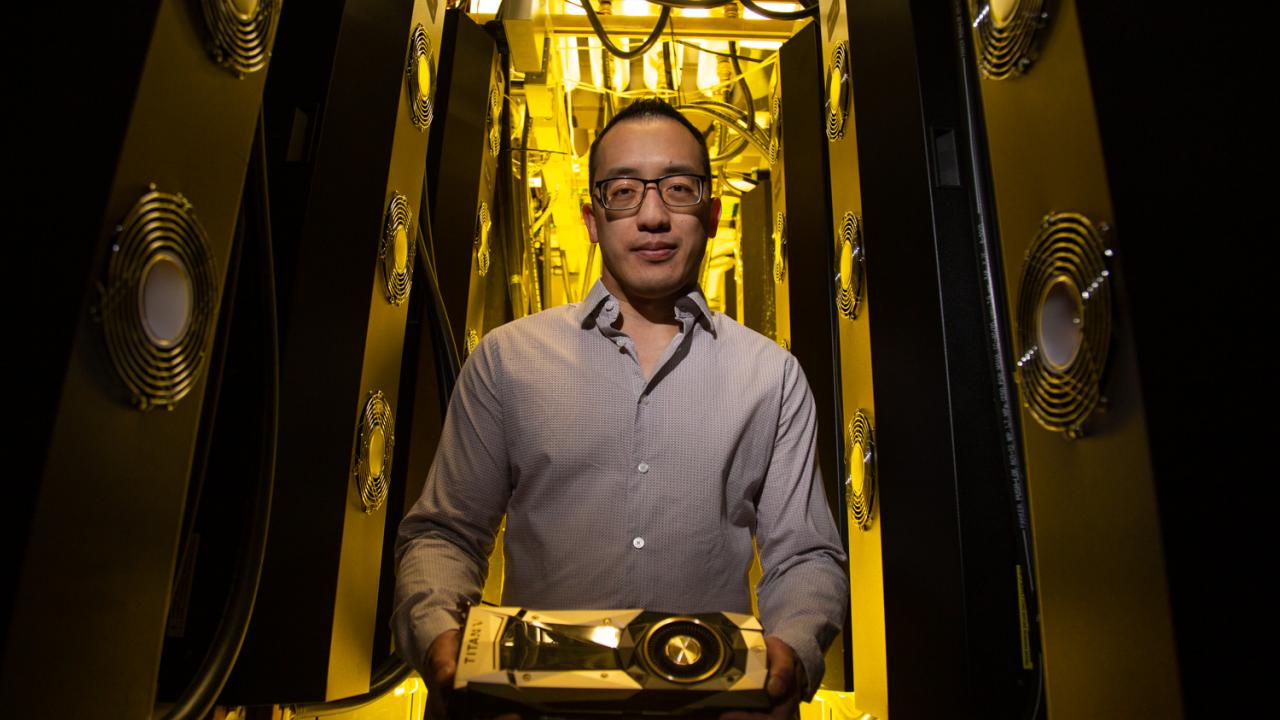
High-Definition Biology: NSF Funds Development of Next Generation Computational Tools for Single-Cell Analysis
Quick Summary
- A 5-year, $850,000 CAREER grant from the NSF will help Gerald Quon develop next-generation computational tools to analyze single-cell genomic data
- With the grant, Quon also hopes to develop quantitative biology programs for high school, undergraduate and graduate students
- Students interested in assisting Quon should email him at gquon@ucdavis.edu
The human body is complex, comprising trillions of cells that work in tandem to promote proper physiological function.
But our systems can go awry, leading to the development of a whole host of diseases, like cancer and Alzheimer’s. The keys to unlocking potential therapeutics for these devastating diseases lie in the genome, the proverbial “blueprint for life.” With each passing day, biotechnologies advance, allowing scientists to dissect these diseases at high-definition, single-cell resolutions.
“Previous technologies relied on collecting DNA or RNA from up to millions of cells to make a single measurement,” said Assistant Professor Gerald Quon, Department of Molecular and Cellular Biology. “But if you have to combine all the material you get from millions of cells, you lose a lot of resolution compared to if you could look at each cell individually.”
“Genomics technologies today are moving towards single-cell resolution,” he added, “and there’s a lot of new challenges associated with data analysis of single-cell genomic data.”
One of those challenges is the innumerable data generated from genomic sequencing. It’s gargantuan, more than humans can understand alone. To accomplish this, we need help from new computational tools and cutting-edge hardware to power machine learning.

Thanks to a roughly 5-year, $850,000 CAREER grant from the National Science Foundation, Quon, who also holds an appointment at the UC Davis Genome Center, will develop next-generation computational tools that will allow researchers to better understand and analyze single-cell genomic data.
New cells on the block
One of Quon’s main goals is to develop computational tools that’ll allow researchers to better understand how cell-to-cell communication affects molecular function and tissue development.
“We want to provide a much higher resolution snapshot of what’s happening in tissues,” said Quon. “For example, in the brain, there’s a lot of variation even between neighboring cells.”
Tissues are much more than just collections of cells individually working on their own. They often communicate with each other in order to coordinate function and development, and so it is important to understand how each cell’s environment impacts its inner workings.
“This is just the beginning,” said Quon. “In the next few years, people are going to release technologies where you actually measure in 2-D and 3-D space where each cell came from. So now not only do you have that high resolution snapshot of each individual cell, but you know how they were organized.”

Small science, big hurdles
Despite the promises of hi-def, single-cell analysis, there are still some significant challenges to work out. A high-resolution snapshot is just the start.
“Even if we know what changes in the genome at the DNA level raise the risk of Alzheimer’s, what is the exact functional impact of those mutations in the cells?” said Quon. “And where exactly in the brain are the target cells being changed?”
While light-years ahead of previous technologies, single-cell genomic sequencing, as is, is still in its nascent stages and riddled with growing pains.
“If I collect a bunch of healthy brain samples and do some sequencing, and then I ask someone else to do the same experiment on the same samples in their own lab, even though we’re looking at the same tissues, there’s a huge amount of variation in what you measure at the end of the day,” said Quon, noting that these differences arise not from the underlying biology but from unwanted differences on the human side of the experimentation process.
“Our tools are driven a lot by the goal of trying to remove what people call ‘unwanted differences,’” he added. To overcome this, his team hopes to develop algorithms and widely disseminate them to scientists interested in studying genomes.

Bringing Quon-titative biology to the masses
The grant will also help Quon develop programs to train high school, undergraduate and graduate students in quantitative biology practices.
“We are developing both classic graduate-level courses to teach people how to use and develop these techniques and technologies, and we’re also working with the Bioinformatics Core and high school outreach programs to try to bring this kind of awareness and skills to the undergraduate and high school level,” he said.
Last year, Quon taught a hands-on tutorial on looking at the genome in 3D to about 20 high school students. “It’s pretty clear that there’s a lot of demand for instruction on these kind of skills,” said Quon, who noted that he’s looking into developing a Course-based Undergraduate Research Experience class based around quantitative biology methods.
Quon is actively seeking research assistance from students interested in quantitative biology. Interested students can check out his website or email him.

